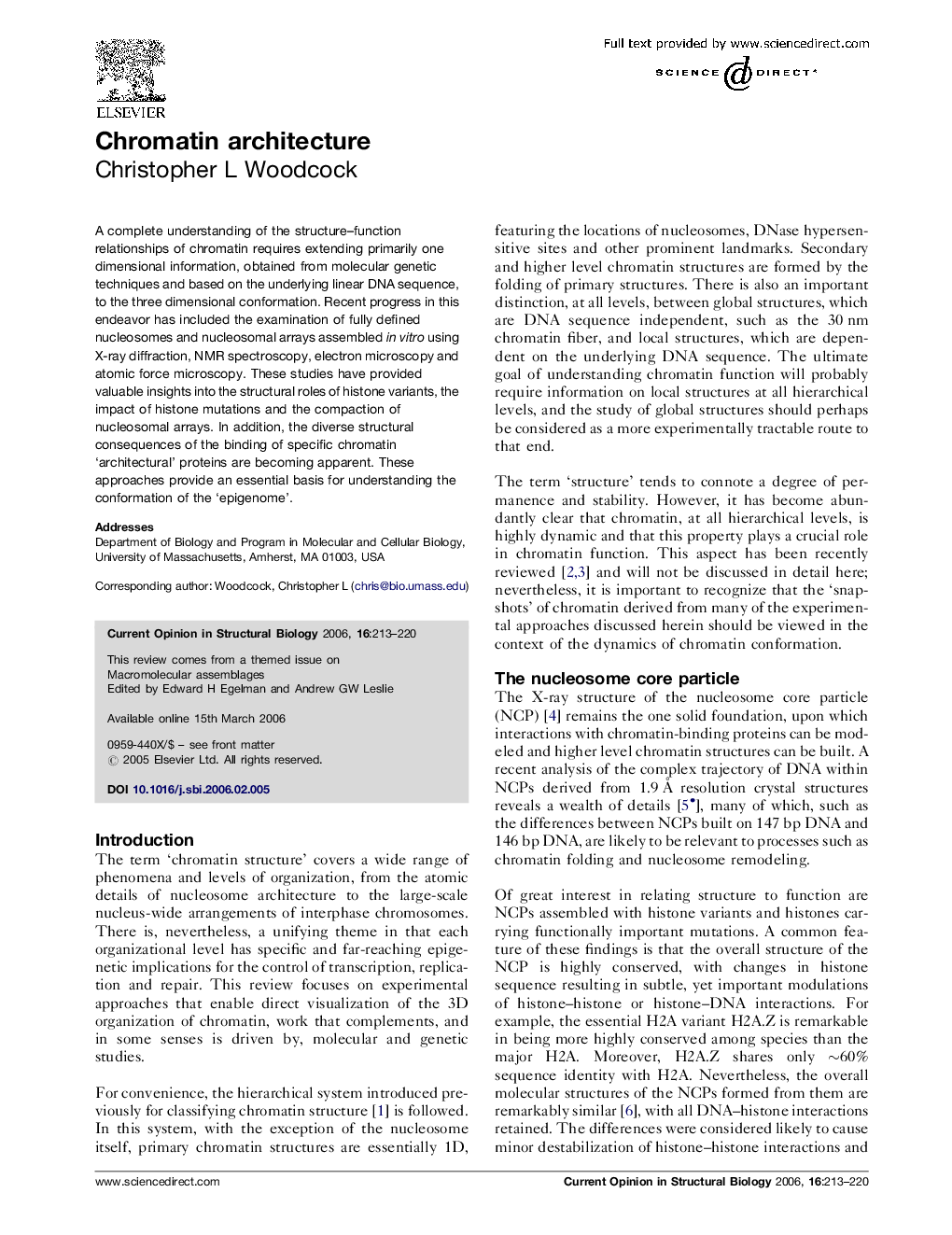| Article ID | Journal | Published Year | Pages | File Type |
|---|---|---|---|---|
| 1979928 | Current Opinion in Structural Biology | 2006 | 8 Pages |
A complete understanding of the structure–function relationships of chromatin requires extending primarily one dimensional information, obtained from molecular genetic techniques and based on the underlying linear DNA sequence, to the three dimensional conformation. Recent progress in this endeavor has included the examination of fully defined nucleosomes and nucleosomal arrays assembled in vitro using X-ray diffraction, NMR spectroscopy, electron microscopy and atomic force microscopy. These studies have provided valuable insights into the structural roles of histone variants, the impact of histone mutations and the compaction of nucleosomal arrays. In addition, the diverse structural consequences of the binding of specific chromatin ‘architectural’ proteins are becoming apparent. These approaches provide an essential basis for understanding the conformation of the ‘epigenome’.
